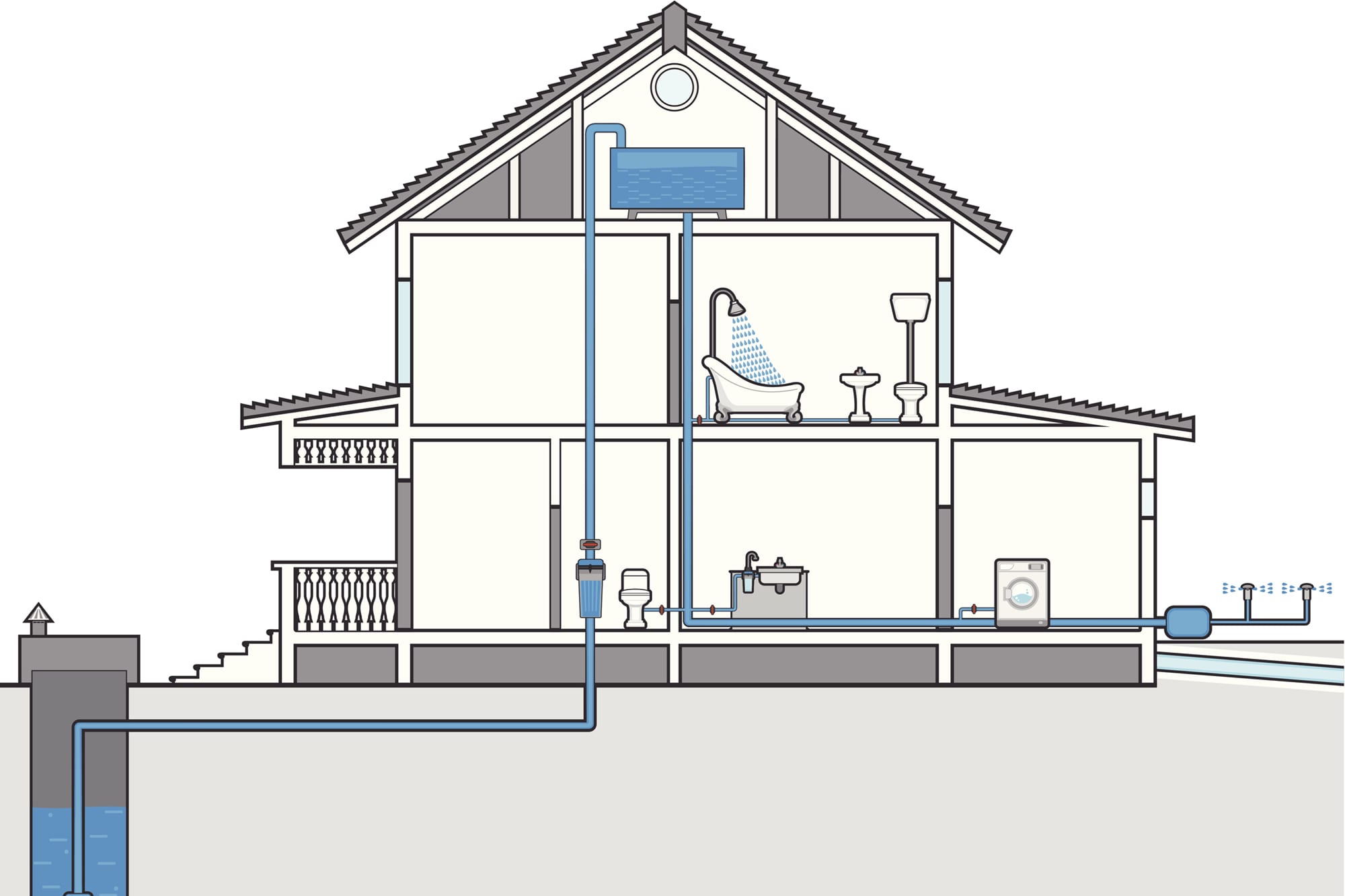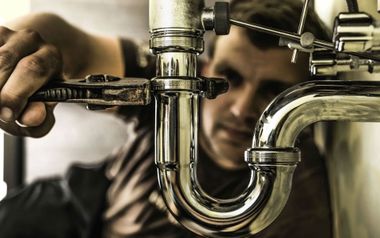What're your thoughts and feelings about Plumbing Installation 101: All You Need to Know?

Understanding just how your home's pipes system works is important for each property owner. From supplying tidy water for drinking, food preparation, and bathing to securely eliminating wastewater, a well-maintained pipes system is essential for your family members's health and convenience. In this extensive guide, we'll explore the detailed network that comprises your home's pipes and offer suggestions on upkeep, upgrades, and handling usual issues.
Intro
Your home's pipes system is greater than just a network of pipelines; it's a complicated system that ensures you have accessibility to clean water and reliable wastewater removal. Recognizing its elements and just how they collaborate can aid you stop expensive repairs and make sure everything runs smoothly.
Standard Parts of a Pipes System
Pipes and Tubes
At the heart of your plumbing system are the pipelines and tubing that lug water throughout your home. These can be made of different materials such as copper, PVC, or PEX, each with its benefits in regards to toughness and cost-effectiveness.
Components: Sinks, Toilets, Showers, etc.
Fixtures like sinks, commodes, showers, and bath tubs are where water is utilized in your house. Understanding exactly how these fixtures link to the pipes system helps in identifying troubles and preparing upgrades.
Shutoffs and Shut-off Points
Valves regulate the circulation of water in your pipes system. Shut-off valves are vital throughout emergencies or when you need to make fixings, allowing you to isolate parts of the system without interfering with water flow to the entire residence.
Water Supply System
Main Water Line
The major water line links your home to the metropolitan water supply or a personal well. It's where water enters your home and is dispersed to various fixtures.
Water Meter and Pressure Regulator
The water meter procedures your water use, while a pressure regulator makes sure that water moves at a secure pressure throughout your home's plumbing system, stopping damage to pipes and fixtures.
Cold Water vs. Warm water Lines
Recognizing the difference between cold water lines, which supply water straight from the main, and hot water lines, which bring warmed water from the hot water heater, aids in repairing and planning for upgrades.
Drainage System
Drain Water Lines and Traps
Drain pipelines carry wastewater away from sinks, showers, and bathrooms to the drain or septic system. Catches protect against sewage system gases from entering your home and additionally catch particles that can cause clogs.
Ventilation Pipes
Ventilation pipes allow air into the water drainage system, protecting against suction that could slow drainage and create catches to empty. Appropriate air flow is vital for preserving the stability of your pipes system.
Value of Correct Water Drainage
Making certain appropriate drainage prevents backups and water damages. Routinely cleaning drains and maintaining traps can prevent pricey fixings and expand the life of your pipes system.
Water Heater
Types of Water Heaters
Water heaters can be tankless or typical tank-style. Tankless heating units heat water as needed, while storage tanks store warmed water for instant use.
Upgrading Your Pipes System
Factors for Updating
Upgrading to water-efficient components or replacing old pipes can boost water quality, lower water expenses, and increase the value of your home.
Modern Pipes Technologies and Their Advantages
Discover innovations like clever leak detectors, water-saving toilets, and energy-efficient hot water heater that can conserve money and reduce ecological influence.
Expense Considerations and ROI
Compute the in advance costs versus lasting financial savings when considering pipes upgrades. Several upgrades spend for themselves through reduced energy bills and less repair services.
How Water Heaters Attach to the Pipes System
Understanding just how water heaters connect to both the cold water supply and warm water distribution lines assists in detecting issues like not enough warm water or leaks.
Upkeep Tips for Water Heaters
Routinely purging your water heater to remove debris, checking the temperature level settings, and evaluating for leaks can expand its life expectancy and improve energy efficiency.
Usual Plumbing Concerns
Leaks and Their Reasons
Leaks can happen due to maturing pipes, loose installations, or high water pressure. Resolving leaks without delay avoids water damages and mold growth.
Clogs and Clogs
Clogs in drains pipes and toilets are commonly caused by flushing non-flushable things or a buildup of oil and hair. Making use of drain displays and being mindful of what decreases your drains pipes can avoid blockages.
Signs of Plumbing Troubles to Watch For
Low water stress, slow drains, foul odors, or abnormally high water bills are indications of possible pipes problems that must be resolved promptly.
Plumbing Upkeep Tips
Regular Evaluations and Checks
Arrange annual plumbing examinations to catch problems early. Try to find indicators of leaks, corrosion, or mineral accumulation in taps and showerheads.
Do It Yourself Maintenance Tasks
Easy jobs like cleansing tap aerators, checking for toilet leaks utilizing dye tablets, or protecting subjected pipelines in cool climates can prevent major plumbing problems.
When to Call a Specialist Plumbing Professional
Know when a pipes concern needs expert proficiency. Attempting complex repairs without appropriate knowledge can lead to more damage and higher repair costs.
Tips for Decreasing Water Usage
Easy practices like taking care of leaks quickly, taking shorter showers, and running full lots of washing and recipes can preserve water and lower your utility bills.
Eco-Friendly Plumbing Options
Consider lasting pipes products like bamboo for floor covering, which is durable and green, or recycled glass for kitchen counters.
Emergency situation Readiness
Actions to Take During a Plumbing Emergency situation
Know where your shut-off shutoffs are located and how to turn off the water supply in case of a ruptured pipeline or significant leakage.
Significance of Having Emergency Contacts Handy
Maintain call info for local plumbing professionals or emergency solutions easily available for quick feedback during a plumbing dilemma.
Ecological Influence and Conservation
Water-Saving Fixtures and Appliances
Mounting low-flow taps, showerheads, and toilets can significantly lower water usage without sacrificing efficiency.
DIY Emergency Fixes (When Relevant).
Temporary solutions like utilizing duct tape to spot a dripping pipe or placing a pail under a dripping tap can lessen damages up until a professional plumbing professional shows up.
Conclusion.
Recognizing the composition of your home's plumbing system empowers you to keep it successfully, conserving money and time on repairs. By adhering to routine upkeep regimens and staying notified concerning contemporary plumbing innovations, you can guarantee your plumbing system runs effectively for several years to come.
Exploring Your Homes Plumbing Anatomy
Water Supply System
- Main Water Line: This is where water enters your home from the municipal supply or a private well.
- Water Meter: Typically located near where the main water line enters the property, it measures the amount of water used.
- Shutoff Valve: It s crucial to know where this is in case of emergencies. It allows you to turn off the water supply to the entire house.
- Pipes and Fittings: These distribute water throughout your home. Materials can include copper, PVC, or PEX.
Drain-Waste-Vent (DWV) System
- Drains: Located in sinks, showers, and tubs, these carry wastewater away.
- Traps: U-shaped pipes under sinks that hold standing water, blocking sewer gases from entering the home.
- Vents: Pipes that lead from the DWV system to the outside, preventing vacuum formation and allowing gases to escape.
- Sewer Line: Carries all wastewater from the home to the municipal sewer system or a septic tank.
Fixtures and Appliances
- Sinks, Toilets, and Showers
- Dishwashers and Washing Machines
- Water Heaters
Maintenance Tips
- Regularly check for leaks in exposed pipes and around fixtures.
- Inspect the water heater annually for signs of wear.
- Clean drains and traps to prevent clogs and odors.
- Know how to shut off water to individual fixtures.
When to Call a Professional
- Major leaks or burst pipes
- Installation of new pipes or fixtures
- Septic tank issues
- Remodeling projects that involve plumbing changes
Conclusion
Understanding the anatomy of your home's plumbing is key to maintaining a functional and efficient system. Regular checks and knowing when to call in the experts can save you time, money, and stress.
https://www.mavyn.com/blog/exploring-your-homes-plumbing-anatomy

Do you appreciate reading about Plumbing Installation 101: All You Need to Know? Create a remark further down. We would be pleased to know your insights about this blog entry. In hopes that you visit us again soon. Sharing is caring. Helping others is fun. I treasure your readership.
Get Quote Now
Comments on “What Your House's Plumbing System Works: Anatomy”